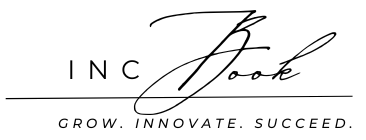Elder care services are increasingly in demand as the population ages, making it a growing and essential industry. Whether you’re starting a new facility, expanding an existing one, or upgrading your services, securing a loan can be crucial to your success. However, the elder care sector comes with unique challenges and opportunities that require specialized knowledge when seeking financing. This guide provides insider tips to help you navigate the loan application process, ensuring that you secure the funding you need to provide top-quality care.
Hint: Make it to the end for Insider tips!
| IncBook: Loans for Elder Care Services | |||
|---|---|---|---|
| Loan Type | Purpose | Key Benefits | Considerations |
| SBA 7(a) Loan | Real estate purchase, renovations, equipment | Favorable interest rates, long repayment terms | Requires strong business plan and creditworthiness |
| SBA 504 Loan | Long-term investments like land or buildings | Lower interest rates, fixed terms | Requires down payment, typically larger loans |
| USDA Business & Industry Loan | Facility improvements, equipment, working capital | Designed for rural areas, flexible usage | Must be located in a rural area |
| Medical Facility Loan | Operational needs of healthcare providers | Tailored terms, delayed payment options | Specific to healthcare, may require collateral |
| Bridge Loan | Short-term funding during transitions | Quick access to funds | Higher interest rates, short repayment period |
| Equipment Financing Loan | Purchasing or upgrading equipment | Equipment serves as collateral, easy approval | Limited to equipment purchases |
| Commercial Real Estate Loan | Buying or refinancing property | Competitive rates, long-term options | Requires property as collateral |
| Green Energy Loan | Eco-friendly facility upgrades | Lower interest rates, tax incentives | Specific to green initiatives |
| Line of Credit | Day-to-day operational expenses | Flexible, revolving access to funds | Interest only on borrowed amount |
| Non-Profit Loans | Supporting mission-driven elder care | Lower interest rates, flexible terms | Only for non-profit organizations |
Insider Tips
Utilize Local Community Bonds: Some elder care facilities have successfully raised funds through local community bonds, where residents invest in the facility in exchange for a small return. This not only raises capital but also fosters a deep sense of community involvement and support.
Invest in Smart Home Integration: Elder care facilities that integrate smart home technologies—such as automated lighting, fall detection systems, and health monitoring devices—can often negotiate better loan terms by demonstrating a commitment to reducing operational risks and enhancing patient safety.
Capitalize on Historical Property Grants: If your elder care facility is housed in a historic building, you may be eligible for grants and low-interest loans specifically for the preservation and adaptive reuse of historical properties. This can significantly reduce renovation costs.
Partner with Local Hospitals for Better Terms: Establish partnerships with nearby hospitals for patient referrals and care coordination. Lenders often view such partnerships as a stability factor, leading to more favorable loan conditions due to the steady stream of patients.
Use Green Certifications to Your Advantage: Elder care facilities that are certified as green or sustainable can often access specialized loans with lower interest rates. Highlight your eco-friendly initiatives, such as solar energy, water conservation systems, or sustainable building materials, to secure these funds.
Leverage Bulk Purchasing Power for Loan Security: By negotiating bulk purchasing agreements for supplies, food, or medical equipment, you can reduce your operational costs. Documenting these savings can strengthen your loan application by showing a lender that you have a cost-effective operation.
Create a Virtual Tour for Investors: Develop a high-quality virtual tour of your facility that showcases its amenities, care quality, and environment. This can be particularly persuasive for remote lenders or investors who may not be able to visit in person, making your loan application stand out.
Implement Pay-for-Performance Models: Introduce pay-for-performance models for your staff, where bonuses are tied to patient satisfaction and care outcomes. This can improve your facility’s overall performance, making it more attractive to lenders who are interested in low-risk investments.
Tap into Specialized Elder Care REITs: Some Real Estate Investment Trusts (REITs) specialize in elder care facilities. Consider selling or leasing your property to a REIT and using the proceeds to fund expansion or improvements. This can also be an alternative to traditional loans, offering more flexible financing options.
Develop a Specialized Memory Care Wing: If you’re expanding your facility, consider creating a specialized memory care wing. Memory care services often attract higher reimbursement rates, and lenders may offer better terms if they see a clear path to increased revenue through this specialized service.
Utilize Telemedicine to Expand Reach: Implement telemedicine services to offer remote care and consultations. This not only enhances your service offerings but can also attract tech-savvy investors and lenders who see the value in expanding your facility’s reach without significant physical expansion.
Leverage Your Facility’s Non-Profit Status: If your elder care facility operates as a non-profit, explore low-interest loan options available through community development financial institutions (CDFIs) or non-profit-specific lenders. These institutions often have a mission to support community-based services like elder care.



